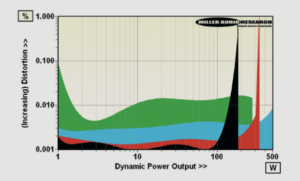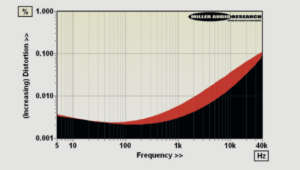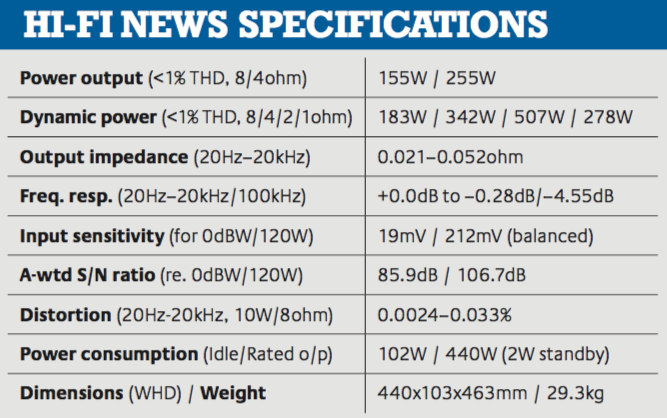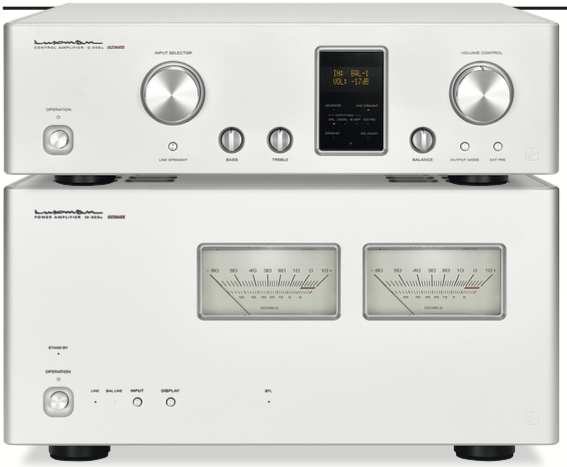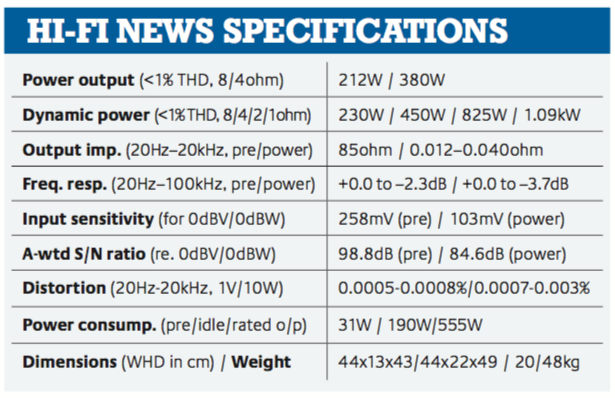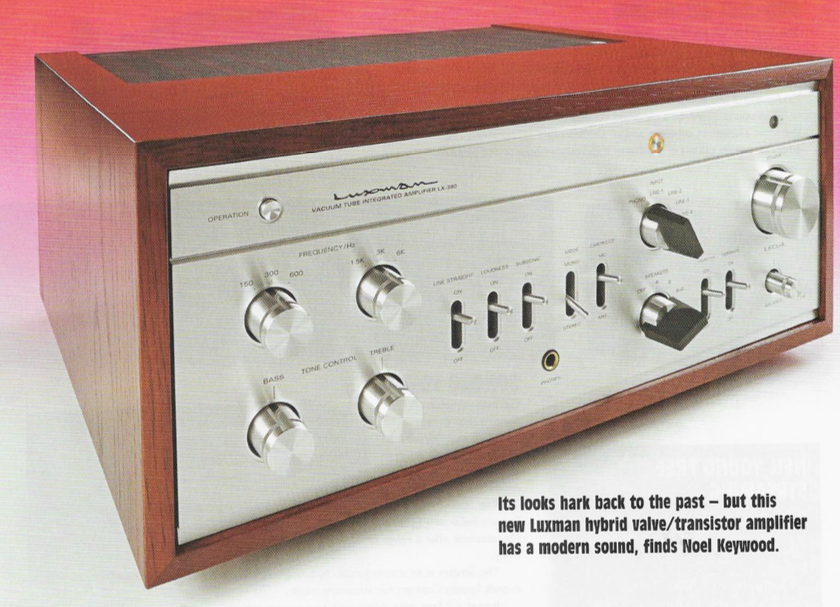
They don’t make’em like they used to – until you see the new Luxman LX-380 valve amplifier from Japan that I’m reviewing here. Japan went down the nostalgia road somewhat before the UK and this new amplifier mines Japan’s not-so-distant past beautifully. It doesn’t just look good, it feels solidly hewn and its controls are delicious to use. Luxman always produced great products – I’ve owned many and this amplifier gets right back to the qualities that attracted me and so many others decades ago.
The LX-380 is not quite pure though: it is a hybrid.The preamplifier stages are solid-state; only the power amplifier is valve (tube) equipped, using 6L6GCs. These are compact tetrodes considered good for 30 Watts in guitar amplifiers where overload is tolerated, but for around 20 Watts in everyday audio use where long life from lower anode volts is preferred – and indeed Lux make this point in their user manual, “operating conditions of the output tubes having some allowance“ they say.
So the LX-380 delivers 20 Watts per channel. It may seem feeble against the 100 Watts or more we expect nowadays, but in conjunction with sensitive floorstanding loudspeakers (90dB from 1 Watt) it is more than enough for very high volume. If you don’t want to wake the dead then it will drive smaller loudspeakers nicely too but I’d recommend large standmounters as a minimum for reasonably high volume coupled with strong bass.
I’ve seen worries about the unreliability of valve amplifiers, the expense of running them and what have you.Yes, power output valves do need replacement after a few thousand hours of use but 6L6GCs are plentiful and around £42 for a matched pair -not a king’s ransom. Expect around 3 years for three hours of use per day, every day – heavy going. Auto-bias makes bias adjustment unnecessary.
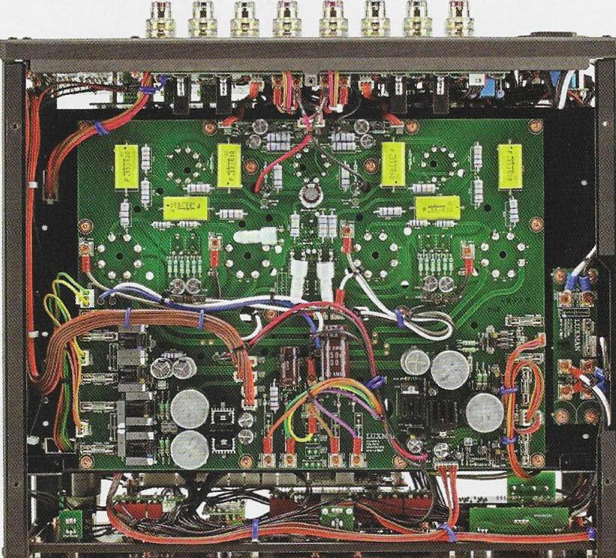
The LX-380 is very user friendly then: it is what it looks, an everyday integrated amplifier, built to standards long gone and with a sound only valves can give – easy going, free from transistor fatigue and with a capacious soundstage. The tubes are hidden and heat output is moderate, so everyone -including the cat – is safe.
Like any self-respecting valve amplifier the LX-380 is heavy, weighting 17.6 kg (39lbs). But it doesn’t take up a lot of space, measuring 440mm (17.3in) wide, 403mm (16in) deep and 197mm (7.8in) high. Most of the weight lies in the two output and one mains transformer but the case is solidly built and Luxman don’t skimp, using a chunky machined alloy fascia with a superb standard of finish.The control knobs and switches are likewise solid machined alloy, having beautifully smooth yet silent actions. I should mention that Luxman advise space be left around the unit for heat dispersal; I’d suggest 6in (15cms) or so above.
Although the volume control looks like a conventional motor driven (remote control) Alps, in fact it is an electronic attenuator with discrete resistors selected by relays operated from a normal volume potentiometer. This gives the feel of a volume control and allows a motor to be used to rotate the knob by remote control.
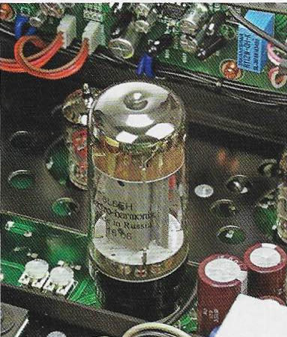
Such a system has the accuracy and quality of a resistive attenuator, including its immunity to overload, whilst also ensuring frequency response is unaffected by volume control position, as it unfortunately can be when a conventional volume control is used in a poorly designed circuit. To do this you must use logic to switch the relays – it is a complex but very purist way of changing volume.
Clever stuff then – electronically sophisticated and expensive to produce – but effective in theory and in practice our measurements showed. The volume control of the LX-380 is a great piece of modern audio engineering in an amplifier that’s seemingly old by looks.This well illustrates what Luxman are offering here: the best of today with the best of yesterday. The past brought up to date.
Like all Luxman amplifiers this one carries a wealth of facilities. It has four Line inputs to accept CD, DVD players and what have you.They are very sensitive, suiting low output devices like low gain external phono stages and old portable players or analogue tuners with low output.
There is a phono stage for LP, front panel switched to suit MM or MC cartridges.The entire preamplifier is solid-state so you don*c
get valves here.
Unlike most modern amplifiers this one has Record Out and Monitor input RCA (phono) sockets to handle externa! open-reel recorders, or cassette decks – a real blast from the past! The valve power amplifier can be accessed direct from Main In sockets – useful for today’s portable players and DACs that have their own volume control and high output (IV or more).
Like amplifiers of yore, there are Bass and Treble tone controls, here with switched turnover frequencies. This makes fine adjustment of frequency extremes possible – great for subtly tailoring the sound of connected loudspeakers. In true audiophile fashion the tone control circuitry can be switched out with a Line Straight lever switch.
The front panel switches and controls do not appear to switch directly: rather they actuate relays, so there was a small kerfuffle when I flicked a lever, because this initiates mute/relay/unmute sequences.You get longer life and better sound quality over that life with this approach but not the instantaneous response of switching direct.
A solidly carved remote control unit alters volume and has a Mute function but does not select input or the other controls and has no On/ Off function.
The rear panel carries two pairs of *speaker sockets, for A and B loudspeaker pairs. Front panel switching selects A, B, or A +B together.
The rear panel carries chunky modern loudspeaker terminals – no sign of the horrible spring clips or shaky screw terminals of the past that allowed shorts and tarnished quickly.They accept spades, 4mm banana plugs or bare wires. All other inputs are unbalanced through the usual RCA type phono sockets; there are no balanced XLR connectors.
Internally there is one protection fuse within the mains transformer primary circuit but none in the secondary HT lines, to protect the output transformer primaries in event of tube failure – something I consider important. Since fuses and fuse holders are cheap I am surprised at this.
SOUND QUALITY
The Luxman sounded unhappy driving our in-house reference Martin Logan ESL-X hybrid electrostatic loudspeakers: bass was limited. This surprised me because valve amps like our Icon Audio Stereo 30SE (30W) are a perfect match.
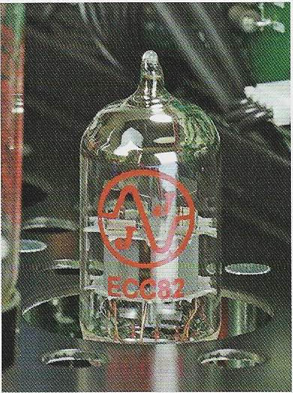
Contrarily,PMC’s twenty5.24 loudspeakers were a match made in heaven.The PMCs have obvious and well-extended bass as well as strong treble with a smooth and easy midband. This did not just suit the LX-380 but the two sounded fabulous together. This does suggest however that the LX-380’s limited bass power of 8 Watts (see Measured Performance) needs to be understandingly accommodated Loudspeaker matching is an issue but I believe it will suit most conventional floorstanders.
Digital was fed in from an Oppo BDP-205D Universal disc player, meaning CD and hi-res from an optically attached Astell&Kern AK120 portable player. For LP I used our in-house reference Timestep Evo modified Technics SL-1210 Mk2 turntable with improved control circuits and linear external power supply, carrying an SME309 arm with Audio Technica VM750SH MM cartridge and, alternatively, an Ortofon Cadenza Bronze MC cartridge to assess both MM and MC inputs.
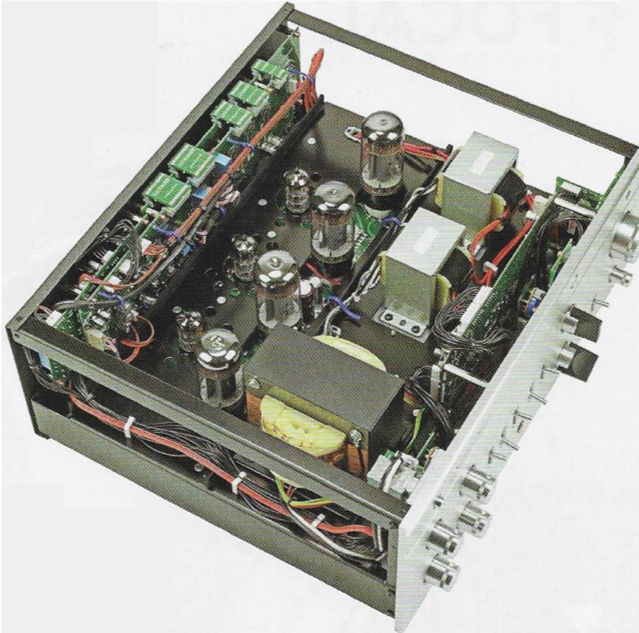
Spinning Josefine Cronholm’s ’In Your Wild Garden’(CD) the reason for buying a valve amplifier was thrown at me: her voice had enormous contrast against a silent background that made for a feeling of great dynamic power.
“There was ease of deIivery, a fluidity of event that makes for a lifelike presentation free of the mechanical sound from transistors.”
Valve amplifiers do this,they have seemingly muscular delivery that suggests primary feedback taps.
The result was an utterly gorgeous sound, vocalists having a lovely rounded presence and lively nature. Treble was as sweet as I could hope for, the emphasis of the PMC’s being reasonably obvious at times, but also contributing to conspicuous and precise stereo images across the sound stage.
The Berliner Philharmoniker playing Strauss ‘Don Quixote’ (24/96) stretched wide and filled our large listening room, massed horns having a lovely brassy quality and plenty of dynamic push. But when all fell silent for a solo violin the Luxman tracked this change beautifully, conveying its emotional impact in full.
Whatever I played, digital from the Oppo was graced by the Luxman^ signature sound – but so too was analogue from LP after switching from Line 1 to Phono and pressing the Technics On button. With Audio Technical VM750SH MM cartridge the bass line behind Mark Knopfler’s ’Madame Geneva’ was firm, expressive and easy to follow via the PMC loudspeakers.The whole delivery was liquidly smooth, atmospherically spacious and a performance to wallow in.
At high volume there was no hiss or hum, LP sounding as deeply silent as CD. I swapped the VM750SH for our Ortofon Cadenza Bronze MC cartridge and flicked the front panel lever switch to MC (no clicks or thumps).
Again, there was virtually no hiss and plenty of available gain – so no apparent matching problem. But the Cadenza was less glassy up top and a tad more amenable and considerably more powerful in its bass.
The reggae-like bass line of Dire Straits ‘Ride Across the River’ was expressed superbly well, sounding strong, deep and articulate. So in spite of poor measured figures I heard a great result here.The PMC’s give strong bass without drawing bass current and this suited the LX-380 perfectly.
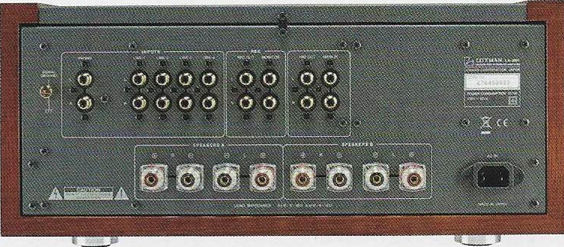
CONCLUSION
They don’t make like they used to: in the LX-380 they now make ‘em better.You pay for this sort of quality and attention to detail but Luxman amplifiers always were more expensive than the herd.They have to be with all the facilities that come included.With ourTimestep Evo updatedTechnics SL1210 Mk2 turntable and a new Audio Technica VM750SH MM cartridge, spinning LP in particular brought past wonders back to life in entirely modern form, giving a luscious sound. So if you hanker after an easy to use amplifier built the way they were – with no digital in sight – the new LX-380 from Luxman is a must. Just use it with suitable loudspeakers to ensure strong bass.
MEASURED PERFORMANCE
The 6L6GC power amplifier output stage is quoted at 20 Watts and just about managed this within a 1% distortion limit. However, it was down to 8 Watts output absolute maximum (3% distortion) at 40Hz due to output transformer core saturation — quite a severe drop. Together with a damping factor of 1.7 the LX-380 will be no bass machine. However, with floorstanding loudspeakers of 90dB sensitivity — not uncommon — 5 Watts or so is enough for extremely high volume so the LX-380 is fine if used in an appropriate system.
Distortion was low, measuring 0.2% at 1 Watt and 1kHz, comprising mostly second harmonic. This figure rose slightly to 0,26% at 10kHz — still a good result. Distortion increased with rising output, hovering around 0.5% at full output (volume).
The output transformers swap power, which needs big cores, for bandwidth — easier to achieve with small cores and bobbins. Frequency response measured flat to a high 60kHz our analysis shows — very wide for a valve amplifier. It also reached flat down to 3Hz — not the best idea as core saturation occurs very early at such low frequencies. Digital usually contains no deep lows but LP can have strong warp signals at 5Hz, but a Subsonic filter is fitted.
Frequency response was unaffected by the 88dB stepped LECUA volume control that is placed within the preamplifier that is solid-state. Line input sensitivity was very high at 120mV and noise low at -95dB, with no hum.
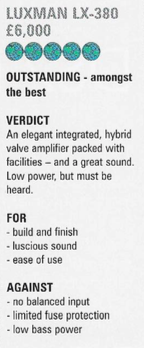
Phono stage equalisation was accurate, giving flat response from 10Hz to 20kHz with MM and MC. The Subsonic filter rolled off output below 100Hz, being -1d13 down at 50Hz and -17dB down at 5Hz — plenty enough to suppress LP warp signals. The Bass tone control, set to 150Hz turnover, compensated for subjective lightening of bass reasonably well when turned up by a very small amount; it has fine resolution.
Phono input sensitivity was very high, 2mV MM and 0.12mV MC being enough for full output. Overload was high at 85mV and 11 mV respectively and noise was also low at -82dB and -65dB respectively, the latter representing a superlow 0.07pV equivalent input noise.
The LX-380 measures well in all areas except bass power, where a limit of 8 Watts was out of keeping with all else. NK
From HiFi World Feb 2018


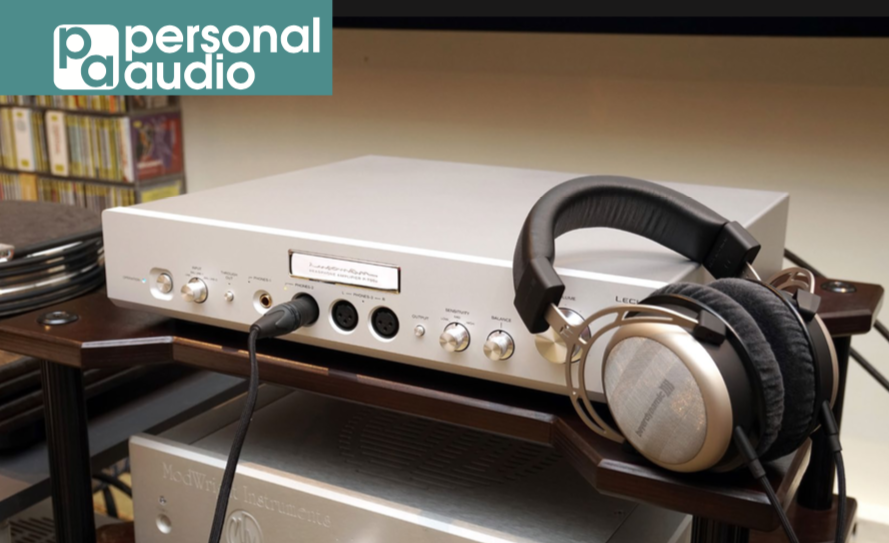

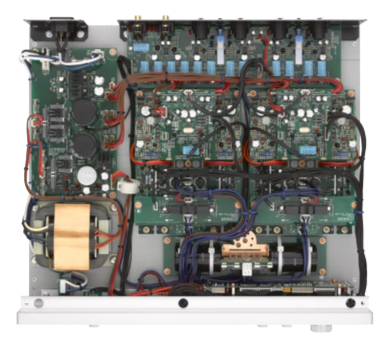
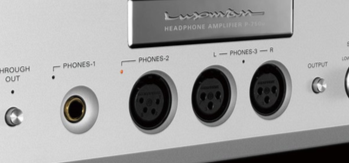

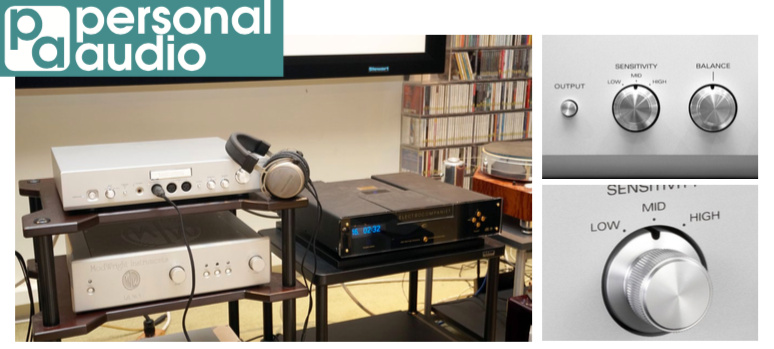
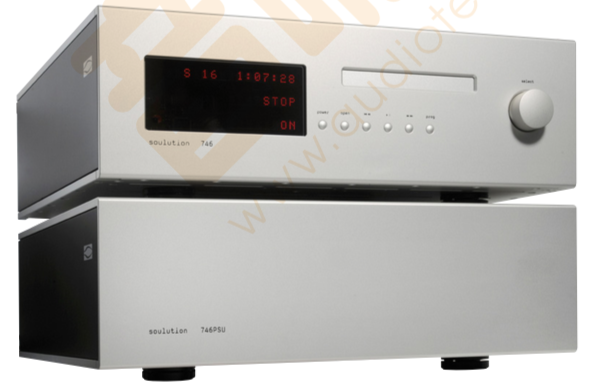
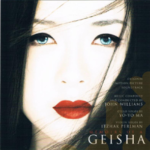 746+ SACD/CD 機除了優異的密度感外,低頻也相當結實,而且是有層次和有變化,我從以下兩張CD就能完全感受得到。找來這張由馬友友和Itzhak Pen-man有份演奏的「藝仗回憶錄」電影原聲大碟,這張CD有幾首歌曲內包含了不少低頻訊息,不過這些低頻不是埋身抽擊這類,這是深沉暗潛的低頻,這是考驗訊源對低頻的解析力,不過這方面絕對考驗不到 746+ SACD/CD機,它有能力把所有訊息交代出來,反而配合的後級和揚聲器稍有偏差,會有機會播不出這些珍貴、微弱的低頻,當然在「音響技術」試音室的一套參考組合,絕對是巨細無遺。另一張是小澤征爾久病初癒後的最新錄音,帶領Saito Kinen Orchestra 演奏Ravel的歌劇,我選來此碟最後一首是Ravel的 “Alborada del gracioso”,這首音樂動態強勁,而且要 求器材瞬態反應快。在 746+ SACD/CD 機播放下,這種突如其來的大動態低頻,真的拳拳到肉,快上快落,絕無拖泥帶水,我相信有這樣絕頂的表現,必定與746+ SACD/CD有強勁電源作為後盾有關。
746+ SACD/CD 機除了優異的密度感外,低頻也相當結實,而且是有層次和有變化,我從以下兩張CD就能完全感受得到。找來這張由馬友友和Itzhak Pen-man有份演奏的「藝仗回憶錄」電影原聲大碟,這張CD有幾首歌曲內包含了不少低頻訊息,不過這些低頻不是埋身抽擊這類,這是深沉暗潛的低頻,這是考驗訊源對低頻的解析力,不過這方面絕對考驗不到 746+ SACD/CD機,它有能力把所有訊息交代出來,反而配合的後級和揚聲器稍有偏差,會有機會播不出這些珍貴、微弱的低頻,當然在「音響技術」試音室的一套參考組合,絕對是巨細無遺。另一張是小澤征爾久病初癒後的最新錄音,帶領Saito Kinen Orchestra 演奏Ravel的歌劇,我選來此碟最後一首是Ravel的 “Alborada del gracioso”,這首音樂動態強勁,而且要 求器材瞬態反應快。在 746+ SACD/CD 機播放下,這種突如其來的大動態低頻,真的拳拳到肉,快上快落,絕無拖泥帶水,我相信有這樣絕頂的表現,必定與746+ SACD/CD有強勁電源作為後盾有關。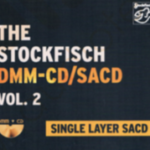 與 Soulution 746+ SACD/CD 機相處了多天,知道播放一般CD已經相當厲害,當遇到製作精良的SACD更加可謂如虎添翼。我播了一張 Stockfisch出品的DMM- CD/SACD Vol.2 的單層 SACD版,音樂一響起,已經感到一種純美、清澈的聲音,好像把錄音與播放之間的隔膜消除了,音樂晶瑩剔透感強烈,人聲焦點精確與背景音樂構成的層次感也相當突出,不過當遇到一些原本錄音不太好,又或者製作不認真的SACD, 746+ SACD/CD 機亦會毫不留情,鐵面無私地把錄音的缺點展露出來,絕對不會為這些不良錄音塗脂抹粉。
與 Soulution 746+ SACD/CD 機相處了多天,知道播放一般CD已經相當厲害,當遇到製作精良的SACD更加可謂如虎添翼。我播了一張 Stockfisch出品的DMM- CD/SACD Vol.2 的單層 SACD版,音樂一響起,已經感到一種純美、清澈的聲音,好像把錄音與播放之間的隔膜消除了,音樂晶瑩剔透感強烈,人聲焦點精確與背景音樂構成的層次感也相當突出,不過當遇到一些原本錄音不太好,又或者製作不認真的SACD, 746+ SACD/CD 機亦會毫不留情,鐵面無私地把錄音的缺點展露出來,絕對不會為這些不良錄音塗脂抹粉。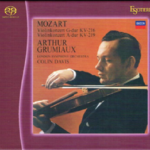 老實說要成為當今最頂班的 SACD 或 CD機,分析力這一個環節是非常重要。起初接觸 746+ SACD/CD 機時,我感覺它是不太強調分析力這部份,使我有點懷疑 746+ SACD/CD 機能否躋身於當今最頂班之列,不過慢慢細味之下,發覺原來 746+ SACD/CD 機不是以誇張手法來表達分析力,不會以一種霎眼嬌的方式,把一些無關重要的細節過份放大,這是採用一種有碗話碗,有碟話碟的方式。其實要使人感覺好像很高的分析力,只要把高頻量感微微提升,就輕易使人產生高分析力的錯覺,而 Soulution 廠方為求傳真和平衡,所以捨棄這種技倆來取悅發燒友。就如播放這張Esoteric版 Arthur Grumiaux 拉奏莫扎特第三及第五小提琴協奏曲SACD, 746+ SACD/CD機絕對能清楚交代Arthur Grumiaux各種弓法和變化,可以清楚聽到細膩、優雅的琴聲,小提琴有種馥郁芬芳的古典味,給予一種極具文化氣息,聽畢Arthur Grumiaux這張錄音後,我突然想到 746+ SACD/CD機的特性真的有點像 Arthur Grumiaux。
老實說要成為當今最頂班的 SACD 或 CD機,分析力這一個環節是非常重要。起初接觸 746+ SACD/CD 機時,我感覺它是不太強調分析力這部份,使我有點懷疑 746+ SACD/CD 機能否躋身於當今最頂班之列,不過慢慢細味之下,發覺原來 746+ SACD/CD 機不是以誇張手法來表達分析力,不會以一種霎眼嬌的方式,把一些無關重要的細節過份放大,這是採用一種有碗話碗,有碟話碟的方式。其實要使人感覺好像很高的分析力,只要把高頻量感微微提升,就輕易使人產生高分析力的錯覺,而 Soulution 廠方為求傳真和平衡,所以捨棄這種技倆來取悅發燒友。就如播放這張Esoteric版 Arthur Grumiaux 拉奏莫扎特第三及第五小提琴協奏曲SACD, 746+ SACD/CD機絕對能清楚交代Arthur Grumiaux各種弓法和變化,可以清楚聽到細膩、優雅的琴聲,小提琴有種馥郁芬芳的古典味,給予一種極具文化氣息,聽畢Arthur Grumiaux這張錄音後,我突然想到 746+ SACD/CD機的特性真的有點像 Arthur Grumiaux。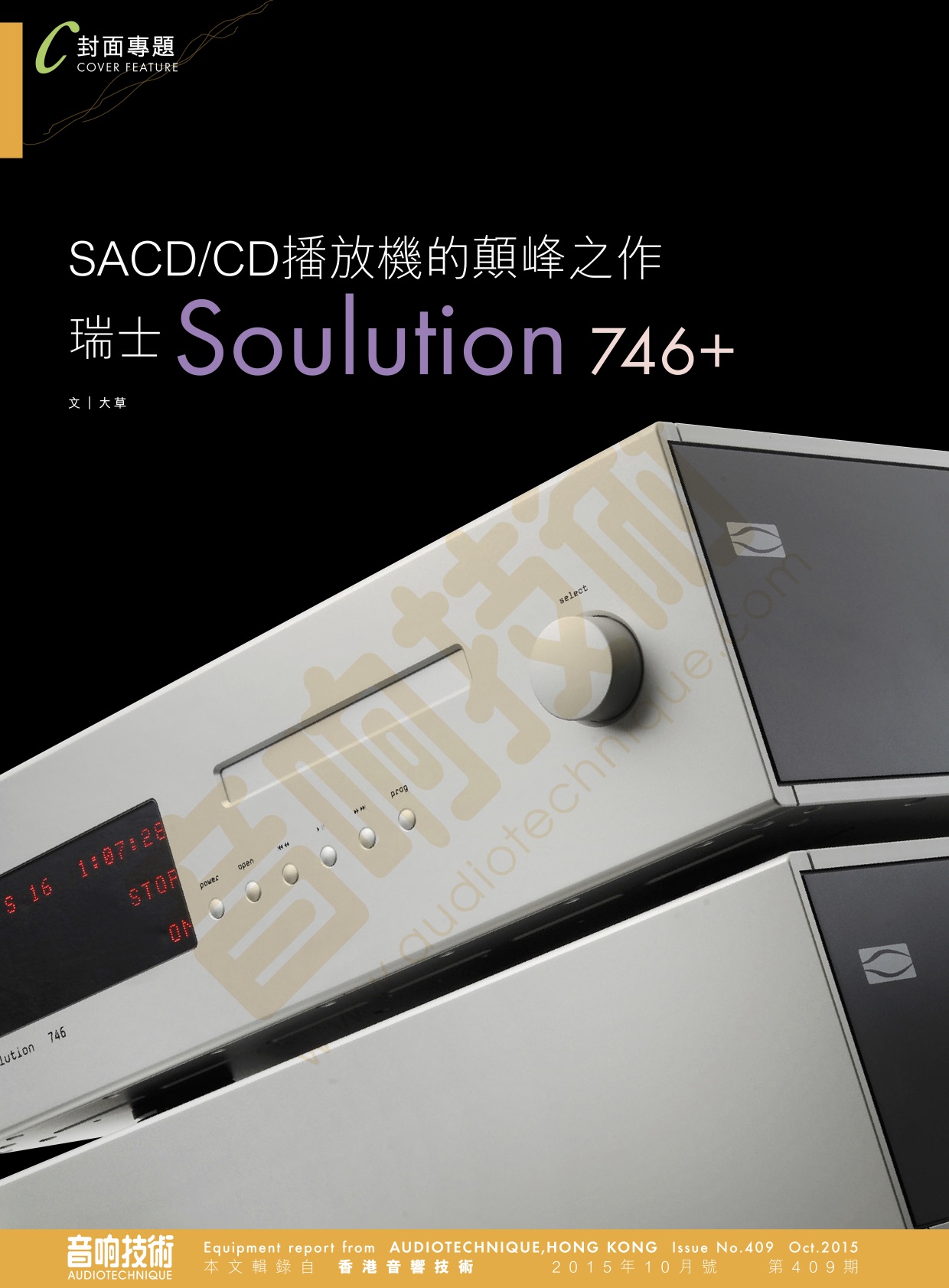

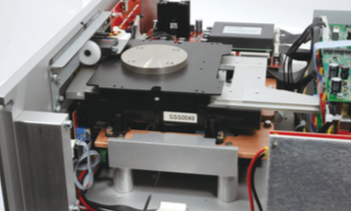 貴為Soulution的旗艦SACD/CD播放機,746+的設計與用料當然是精銳盡出。主角之一的雷射機芯是選用Esoteric的VOSP UMK- 5,毫無疑問,UMK-5是Esoteric 的優秀產品,同時也是音響市場上有數的高質雷射機芯,不過各位讀者或許會和我一樣感到好奇,以746+這個極品級數的機種,為什麼不向Esoteric訂購更高級的 VRDS-NEO雷射機芯呢?廠方的回應是VRDS-NEO機芯須要整份原封不動地移植到746+身上,他們的工程師不能夠對這份機芯作出任何改動,但UMK-5的設計卻容許他們作出很多提升表現的針對性摩改,例如機芯安裝在厚身的銅製底座上,並且加裝適當的阻尼墊片來達致理想的隔震效果,所以他們認為現在746+身上的UMK-5 比起安裝VRDS-NEO在音效上會有更佳的表現!
貴為Soulution的旗艦SACD/CD播放機,746+的設計與用料當然是精銳盡出。主角之一的雷射機芯是選用Esoteric的VOSP UMK- 5,毫無疑問,UMK-5是Esoteric 的優秀產品,同時也是音響市場上有數的高質雷射機芯,不過各位讀者或許會和我一樣感到好奇,以746+這個極品級數的機種,為什麼不向Esoteric訂購更高級的 VRDS-NEO雷射機芯呢?廠方的回應是VRDS-NEO機芯須要整份原封不動地移植到746+身上,他們的工程師不能夠對這份機芯作出任何改動,但UMK-5的設計卻容許他們作出很多提升表現的針對性摩改,例如機芯安裝在厚身的銅製底座上,並且加裝適當的阻尼墊片來達致理想的隔震效果,所以他們認為現在746+身上的UMK-5 比起安裝VRDS-NEO在音效上會有更佳的表現!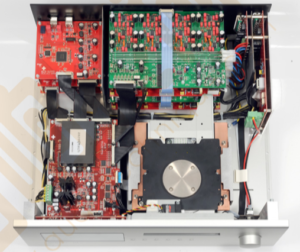 每一份D/A轉換線路都需要一份模擬低通濾波器來壓抑高頻噪音和混疊訊號(Aliasing Signals),因而增加高頻的相位偏移。746+採用模擬3階巴素爾濾波器(Bessel-filter),雖然截止頻率為較高的 120kHz,但仍然會在音頻範圍出現15′ 的相移,所以Soulution特別開發出獨有以DSP為基礎的零相技術 Zero-Phase Technology,在數碼訊號進入D/A解碼 芯片之前把潛在的相位誤差預先作出修正,當訊號通過D/A轉換和低通濾波器之後,這些誤差便會抵消掉,所以746+最終輸出的模擬音樂訊號的相位偏移是低於V (20 H z- 100kHz)這個驚人數字!沒有受到相位偏移影響的音樂重播自然更傳真傳神。
每一份D/A轉換線路都需要一份模擬低通濾波器來壓抑高頻噪音和混疊訊號(Aliasing Signals),因而增加高頻的相位偏移。746+採用模擬3階巴素爾濾波器(Bessel-filter),雖然截止頻率為較高的 120kHz,但仍然會在音頻範圍出現15′ 的相移,所以Soulution特別開發出獨有以DSP為基礎的零相技術 Zero-Phase Technology,在數碼訊號進入D/A解碼 芯片之前把潛在的相位誤差預先作出修正,當訊號通過D/A轉換和低通濾波器之後,這些誤差便會抵消掉,所以746+最終輸出的模擬音樂訊號的相位偏移是低於V (20 H z- 100kHz)這個驚人數字!沒有受到相位偏移影響的音樂重播自然更傳真傳神。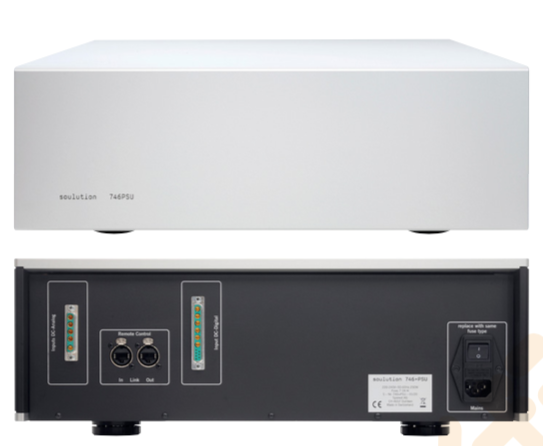
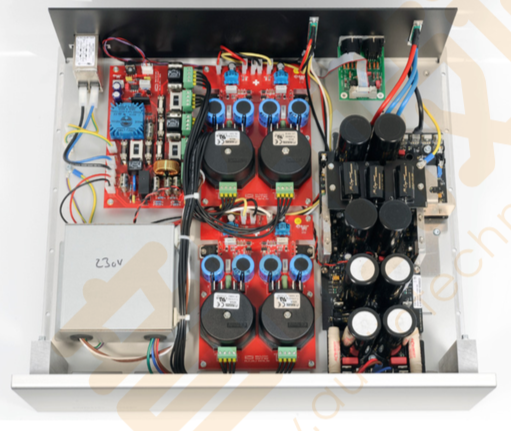
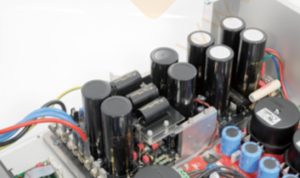 退耦電容更是M Cap Supreme金銀膜油浸電容!老實講,有不少音響名牌的放大器也沒有如此重料的電源供應。而雷射機芯與數碼線路的電源供應也是充滿誠意的重料設計。至於三條連接746+主機與分體電源供應的多芯直流電源線,也是採用瑞士發燒線廠Vovox生產的旗艦級線材 textura fortis!
退耦電容更是M Cap Supreme金銀膜油浸電容!老實講,有不少音響名牌的放大器也沒有如此重料的電源供應。而雷射機芯與數碼線路的電源供應也是充滿誠意的重料設計。至於三條連接746+主機與分體電源供應的多芯直流電源線,也是採用瑞士發燒線廠Vovox生產的旗艦級線材 textura fortis!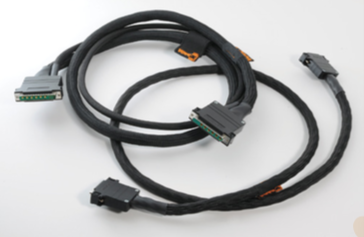
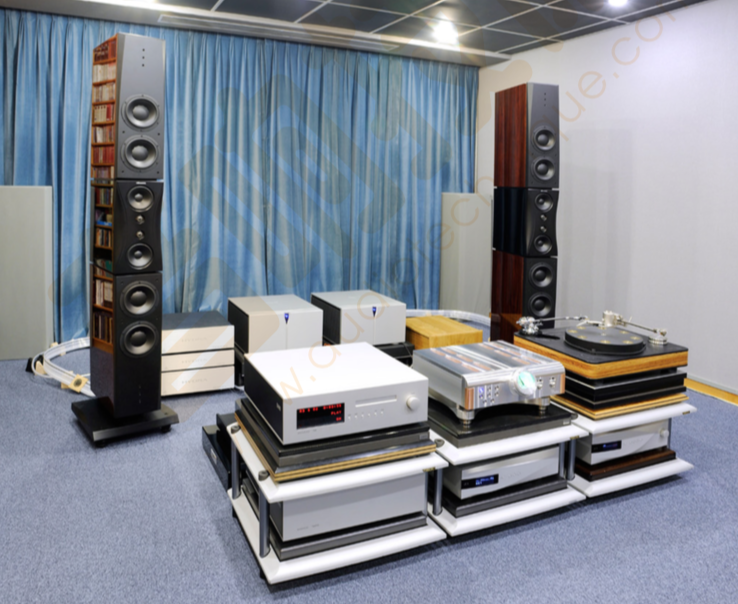
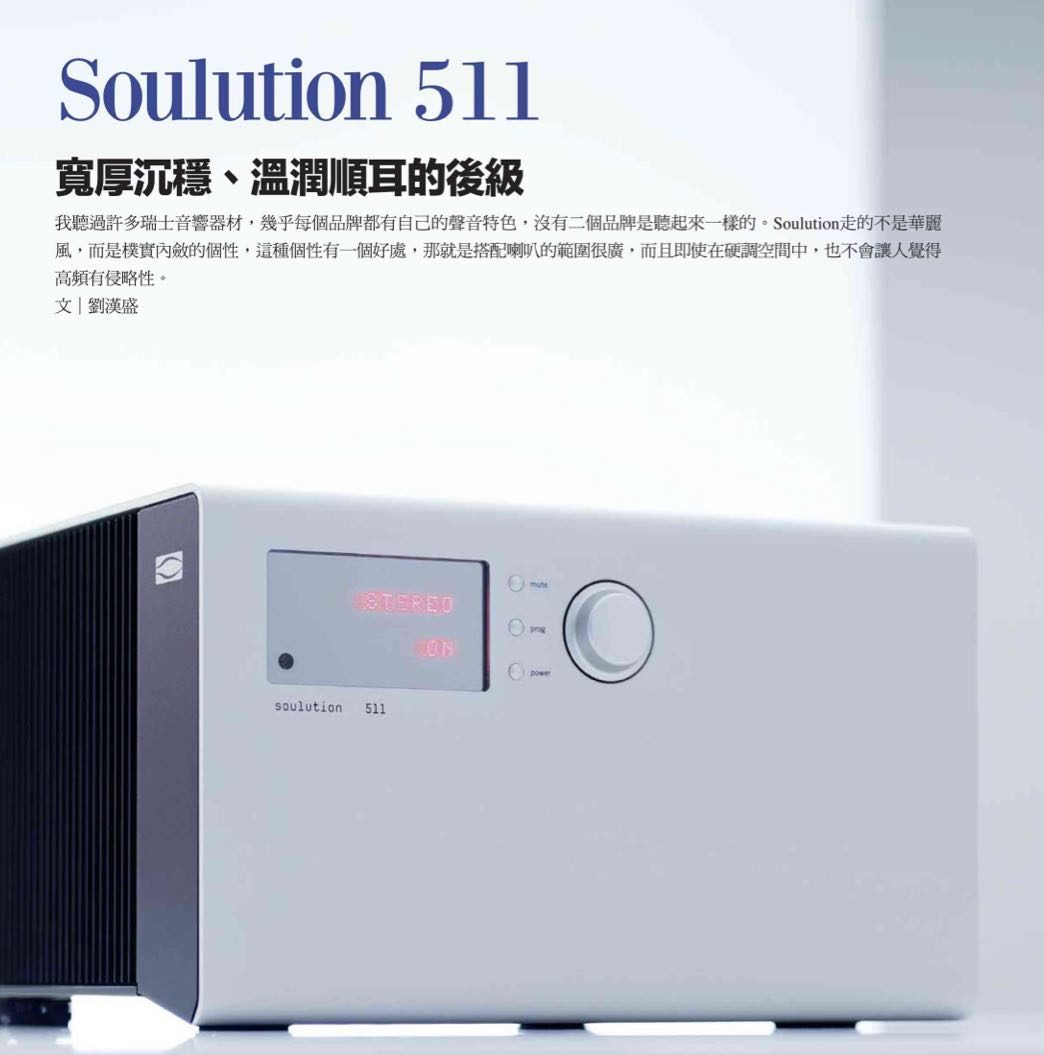
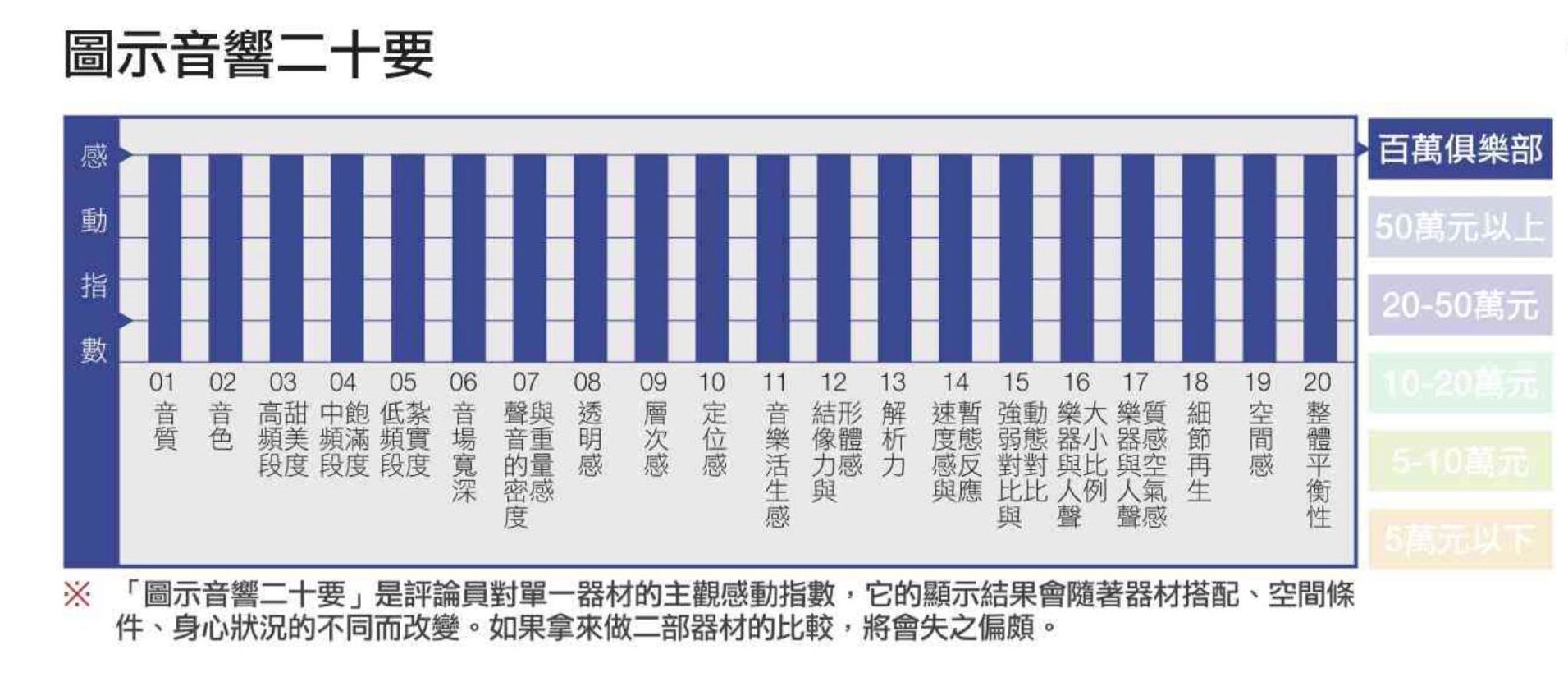
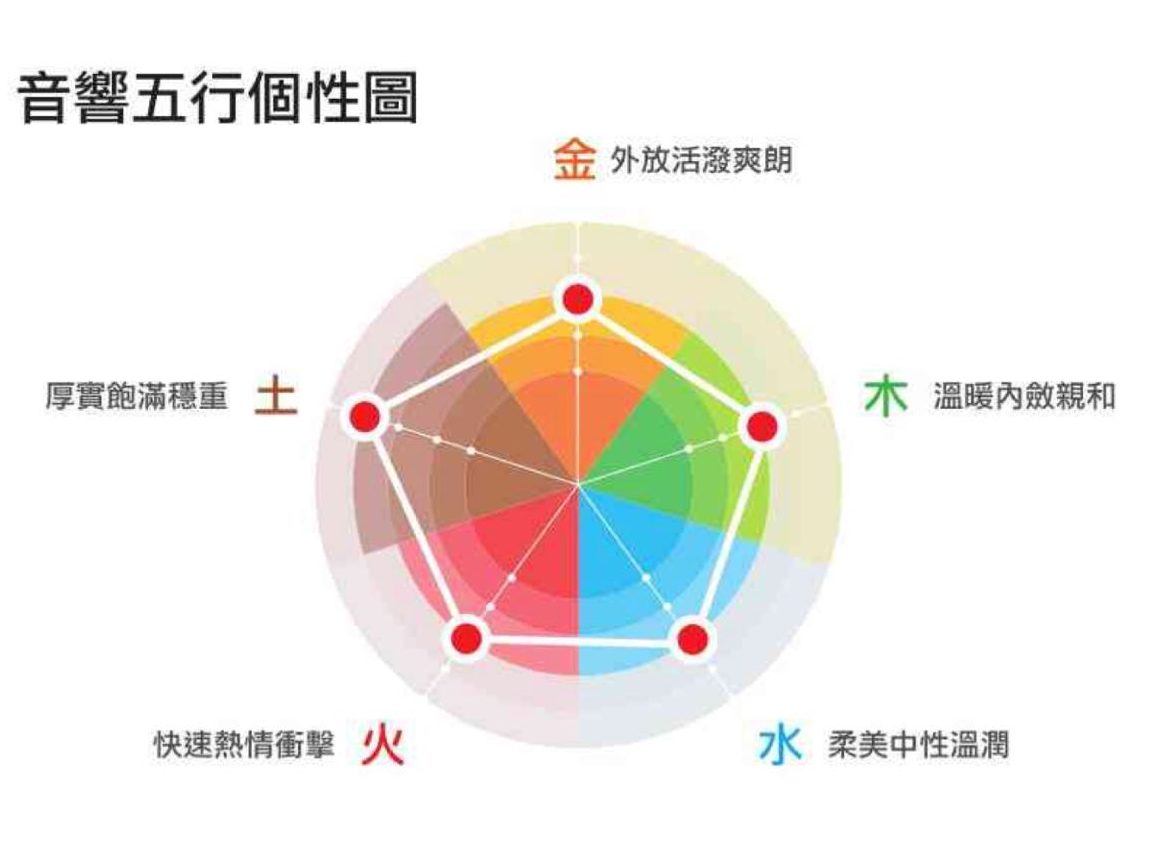
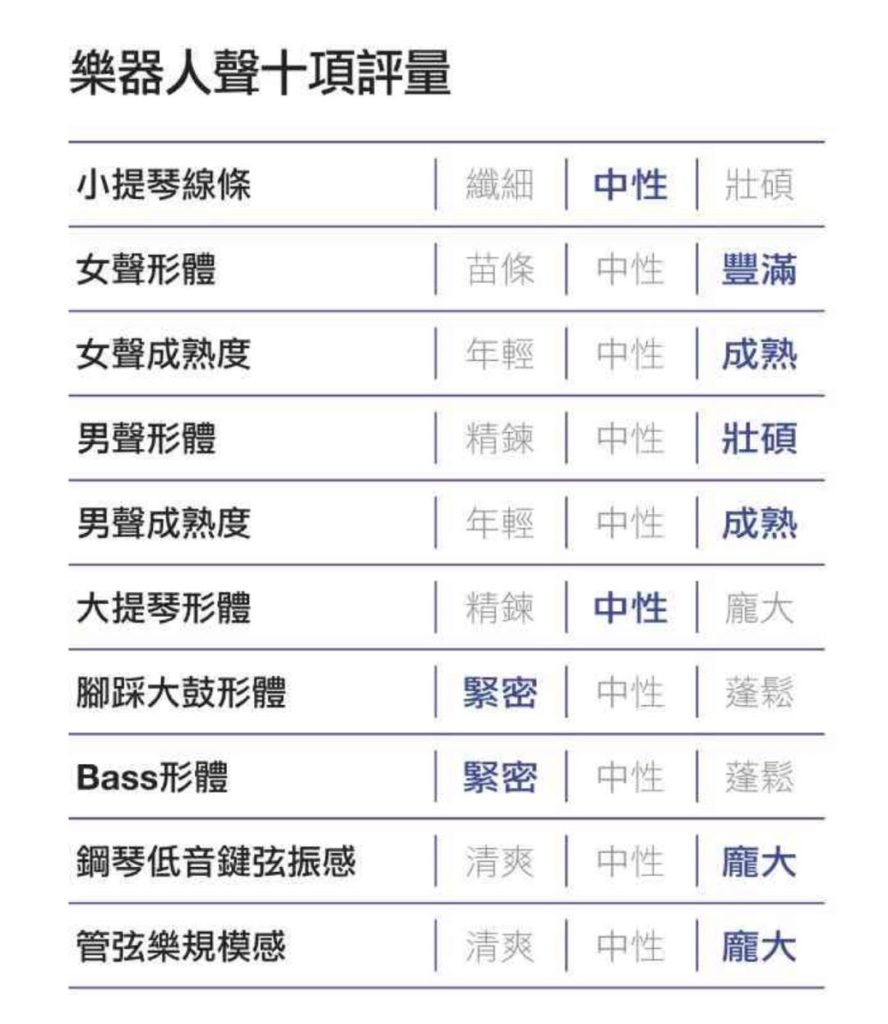
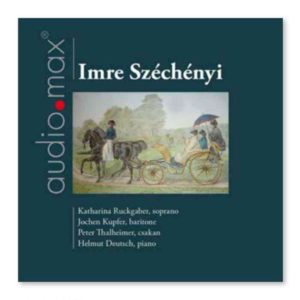
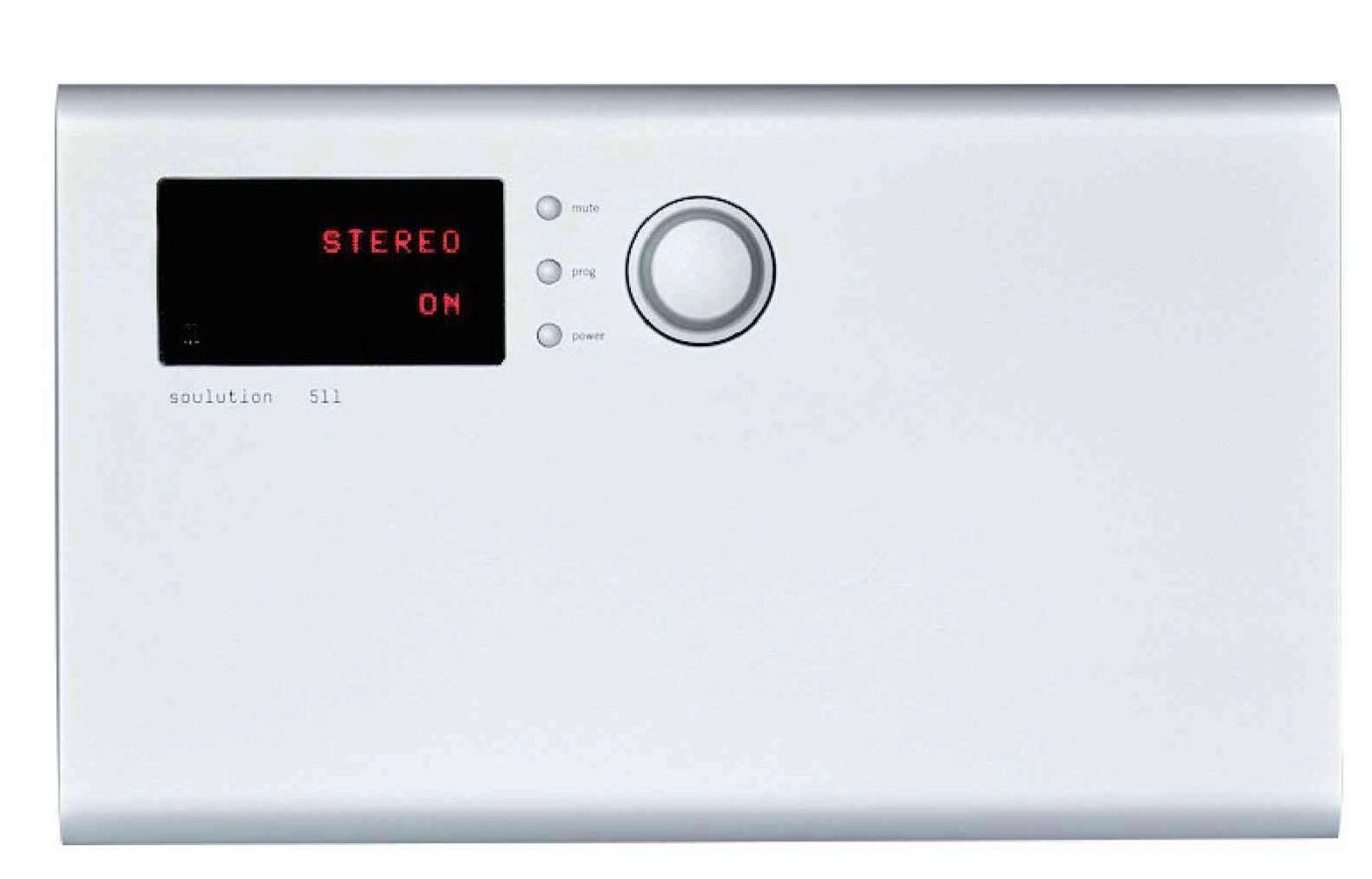
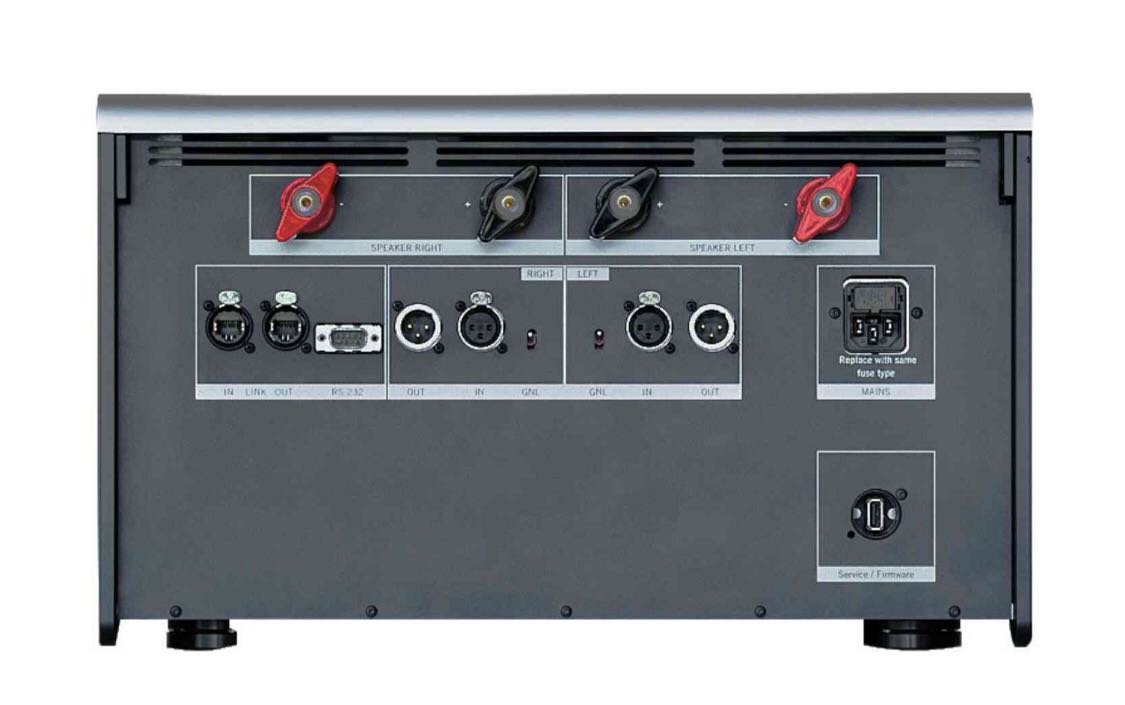
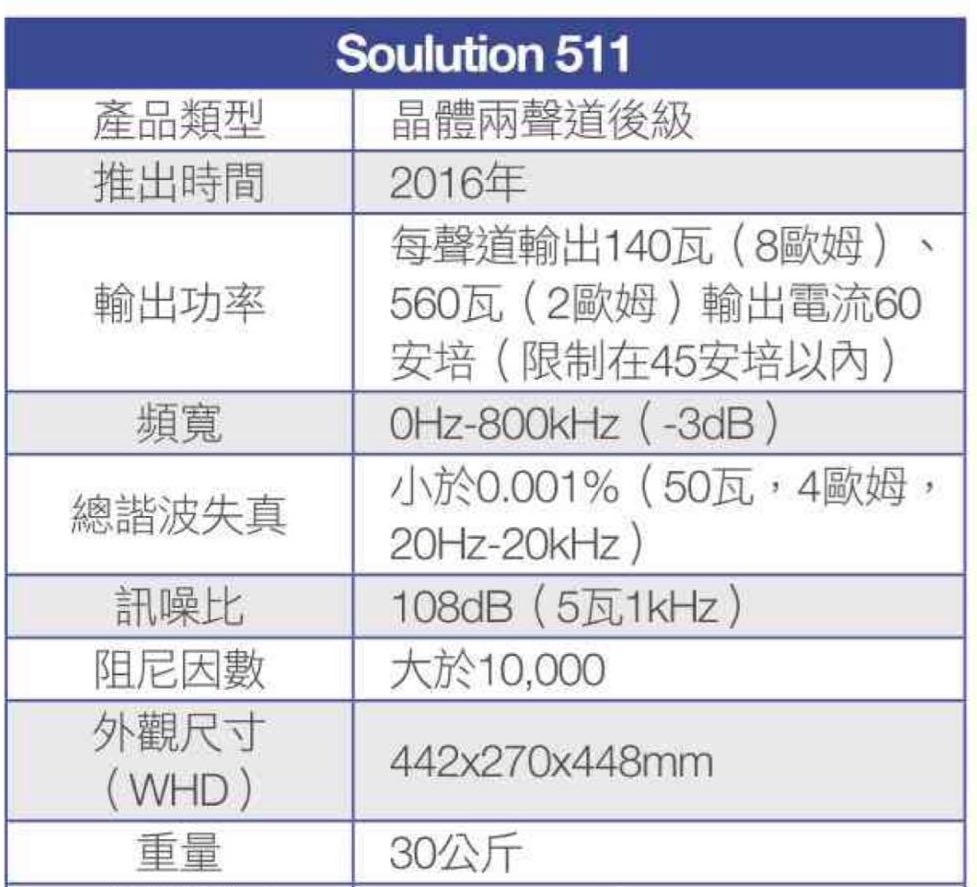
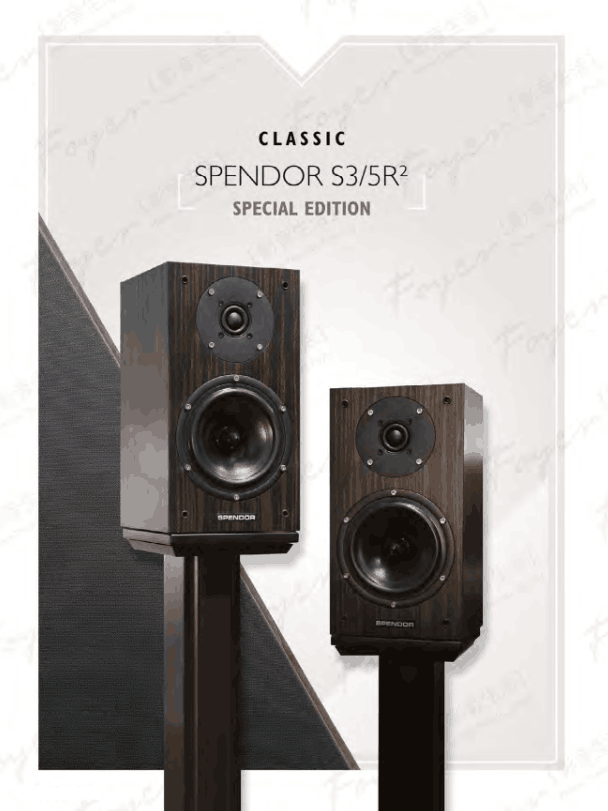
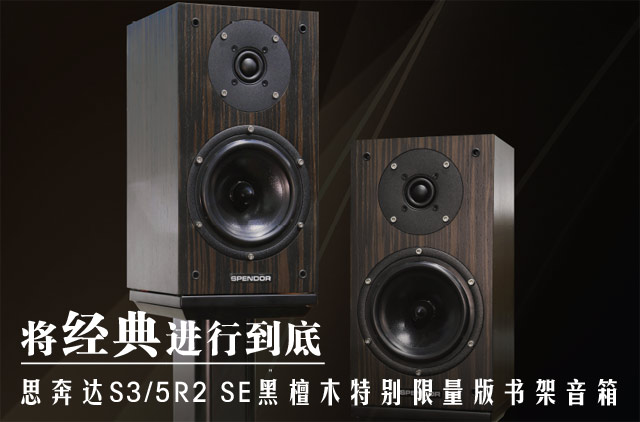
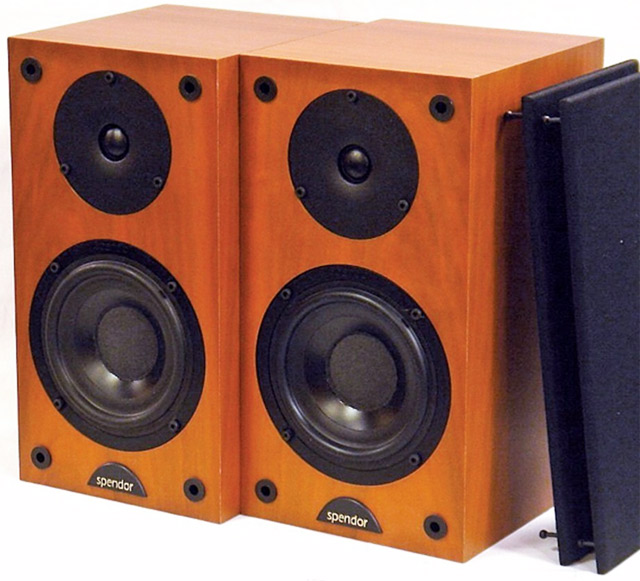
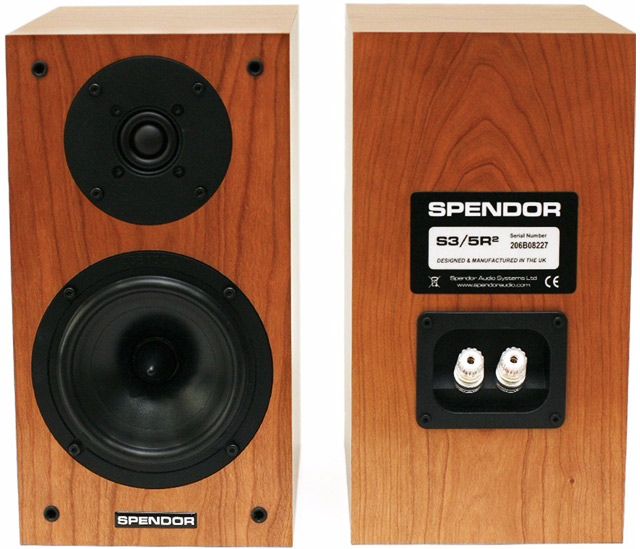
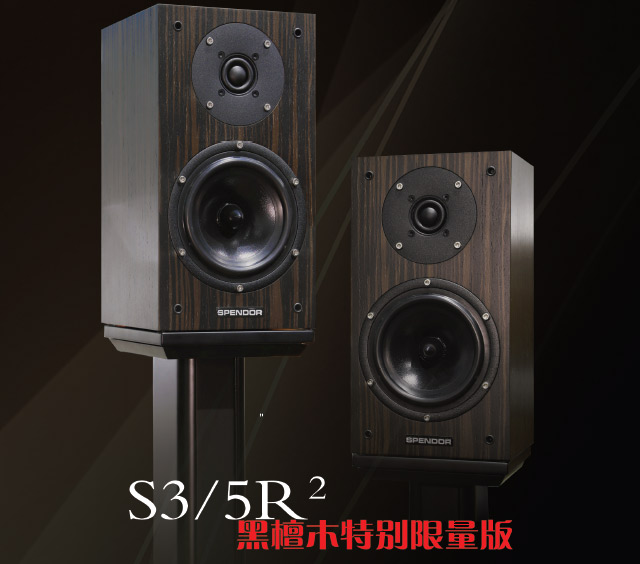
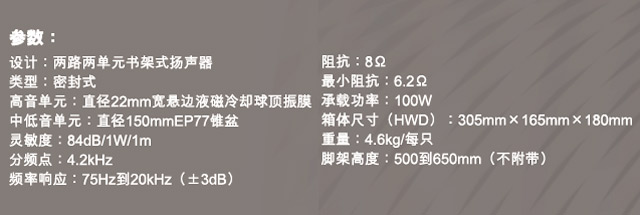
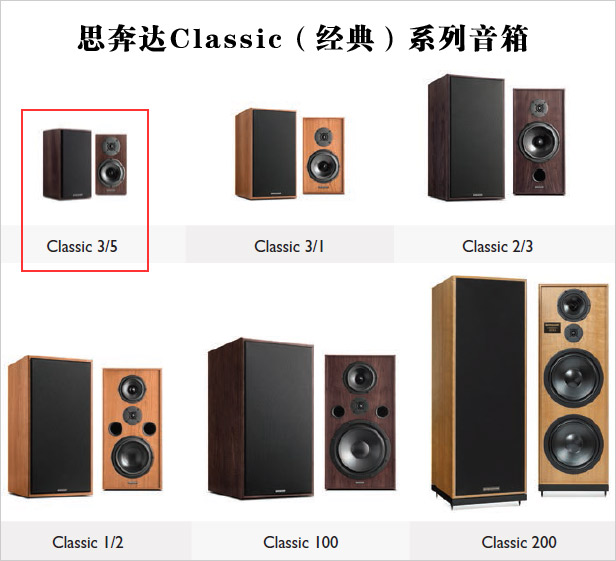
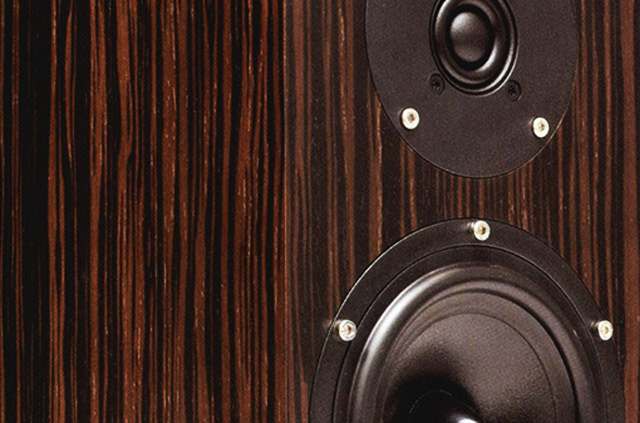
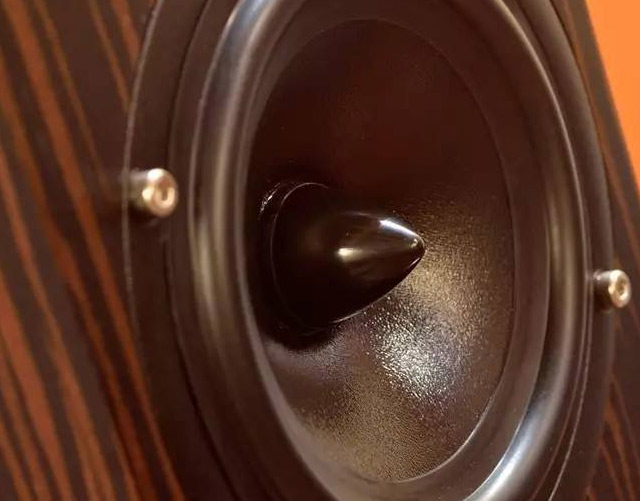
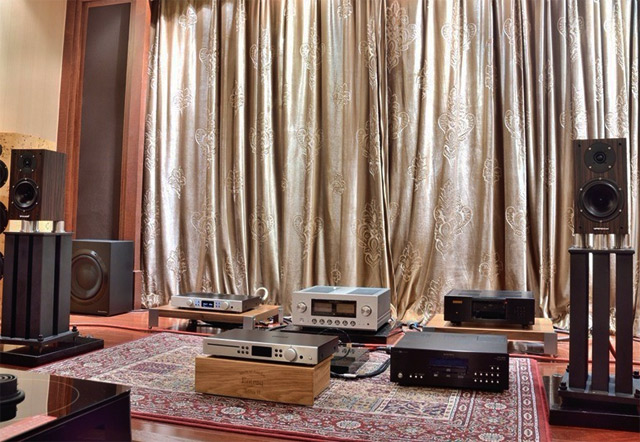
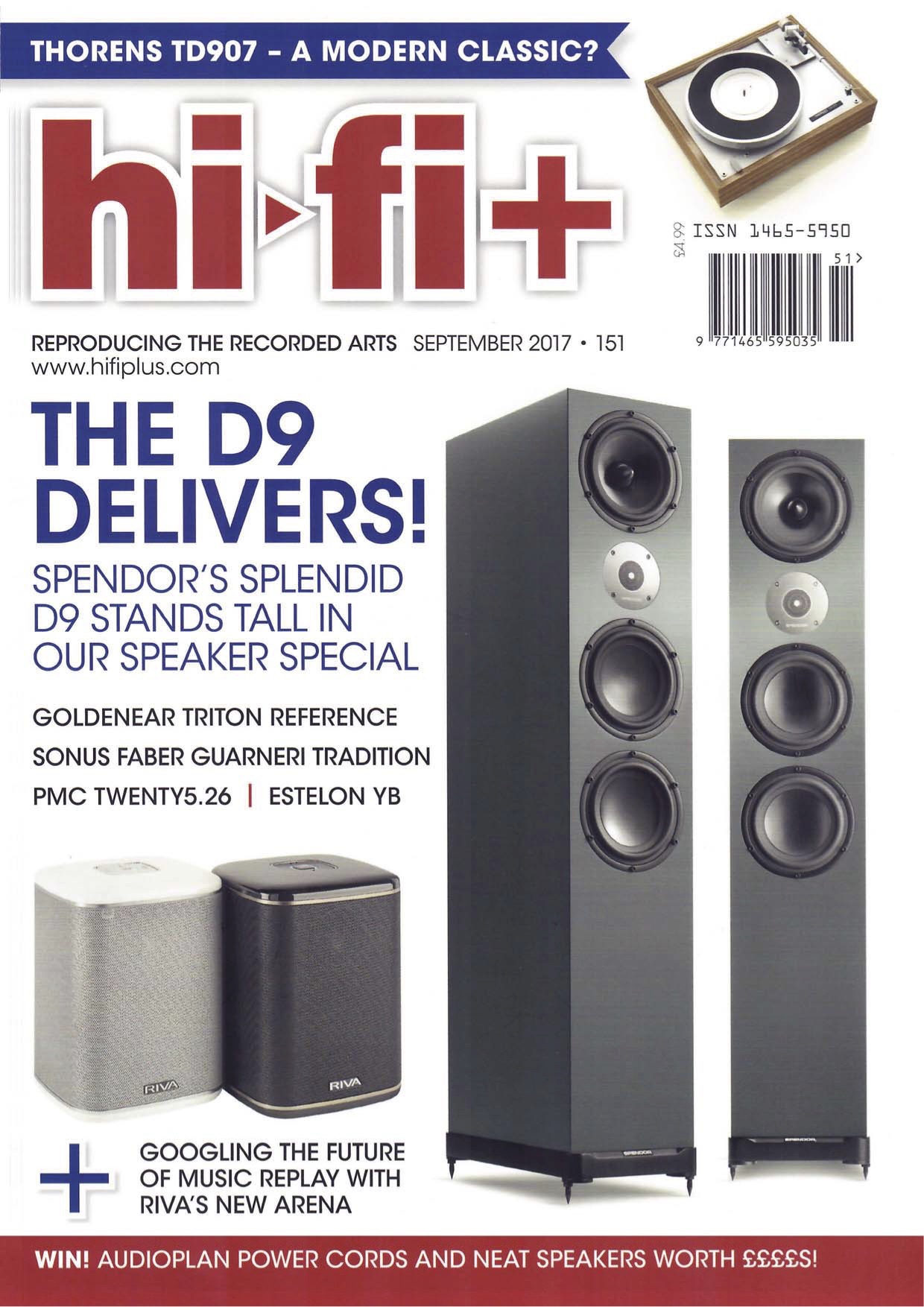
 Spendor may be one of the oldest (and most respected) names in the UK audio industry, but since its acquisition by Philip Swift (once of Audiolab) its products have been anything but old-fashioned. Admittedly, the Classic Series products look the ‘pipe and slippers’ part -all nostalgic finishes and appearance – but even here, beneath the skin these venerable designs have benefitted from carefully considered upgrades and technological improvements – developments that have filtered down directly from the unmistakably modern A- and D-Line products, whose slim cabinets are themselves anything but The-too’ versions of modern thinking, You don’t have to look too far before you find the evidence that Spender may build on the solid foundations that made speakers like the BC1 world famous, but it is only too ready to invest in modern technology and investigate practical solutions to modern concerns, The A6R, a slim, floorstanding two-way that looks remarkably conventional is anything but, at least in musical terms. Instead it manages to offer all the advantages of two-way operation in a compact enclosure that (in stark contrast to the competition) doesn’t sing along with the music. Then there’s the D1, a compact standmount of such remarkable musical coherence that it’s capable of challenging all those high-end miniatures that cost many, many times its modest price. And that’s the thing: it’s not just what these speakers do (which is impressive enough), but how they do it for the price that is the burning question, The arrival of the D9, a new flagship for the line, neatly encapsulates current thinking at Spendor, offering the opportunity to dig a little deeper into what makes these products not just perform, but exceed expectations.
Spendor may be one of the oldest (and most respected) names in the UK audio industry, but since its acquisition by Philip Swift (once of Audiolab) its products have been anything but old-fashioned. Admittedly, the Classic Series products look the ‘pipe and slippers’ part -all nostalgic finishes and appearance – but even here, beneath the skin these venerable designs have benefitted from carefully considered upgrades and technological improvements – developments that have filtered down directly from the unmistakably modern A- and D-Line products, whose slim cabinets are themselves anything but The-too’ versions of modern thinking, You don’t have to look too far before you find the evidence that Spender may build on the solid foundations that made speakers like the BC1 world famous, but it is only too ready to invest in modern technology and investigate practical solutions to modern concerns, The A6R, a slim, floorstanding two-way that looks remarkably conventional is anything but, at least in musical terms. Instead it manages to offer all the advantages of two-way operation in a compact enclosure that (in stark contrast to the competition) doesn’t sing along with the music. Then there’s the D1, a compact standmount of such remarkable musical coherence that it’s capable of challenging all those high-end miniatures that cost many, many times its modest price. And that’s the thing: it’s not just what these speakers do (which is impressive enough), but how they do it for the price that is the burning question, The arrival of the D9, a new flagship for the line, neatly encapsulates current thinking at Spendor, offering the opportunity to dig a little deeper into what makes these products not just perform, but exceed expectations.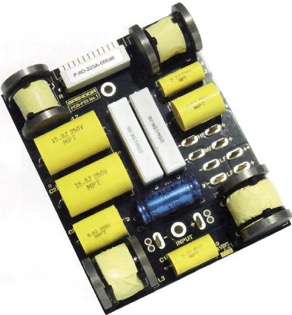
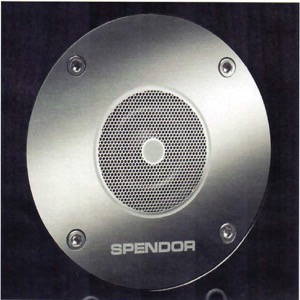 At the other end of the range, we find Spendor’s innovative LPZ tweeter. This soft dome, coupled-cavity driver is familiar from both the D–1 and D7, but it should still be noted just how effective and musically accomplished this apparently simple design really is. The perforated face plate acts to equalize phase and pressure across the face of the driver, producing time- and phase-coherent output, while the equivalent cavities in front of and behind the diaphragm means that the moving parts constitute a linear, balanced-mode generator: simple but effective.
At the other end of the range, we find Spendor’s innovative LPZ tweeter. This soft dome, coupled-cavity driver is familiar from both the D–1 and D7, but it should still be noted just how effective and musically accomplished this apparently simple design really is. The perforated face plate acts to equalize phase and pressure across the face of the driver, producing time- and phase-coherent output, while the equivalent cavities in front of and behind the diaphragm means that the moving parts constitute a linear, balanced-mode generator: simple but effective.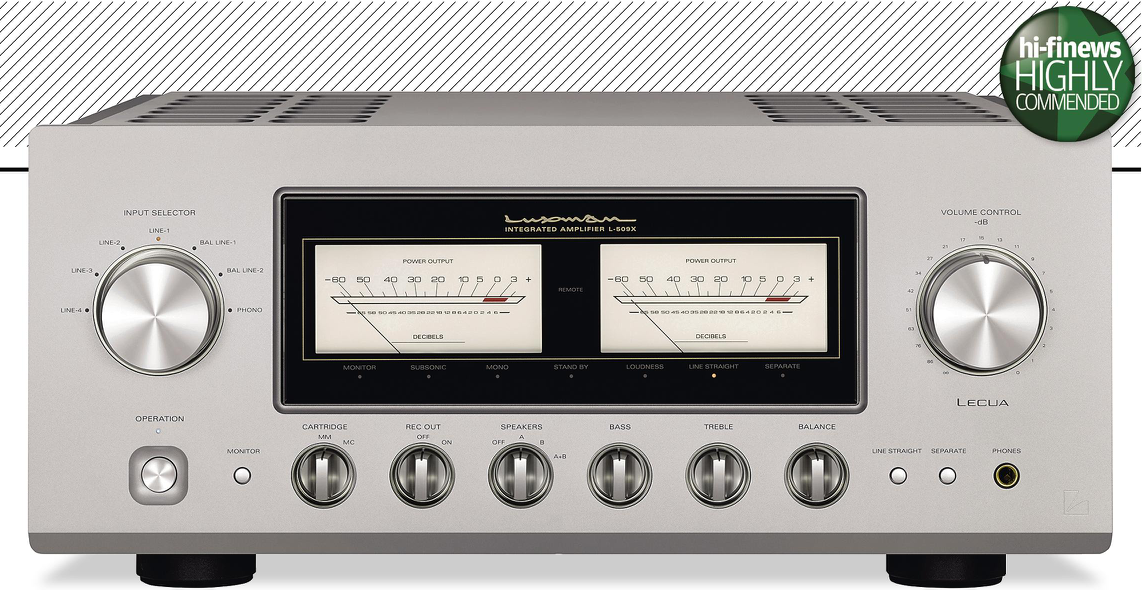
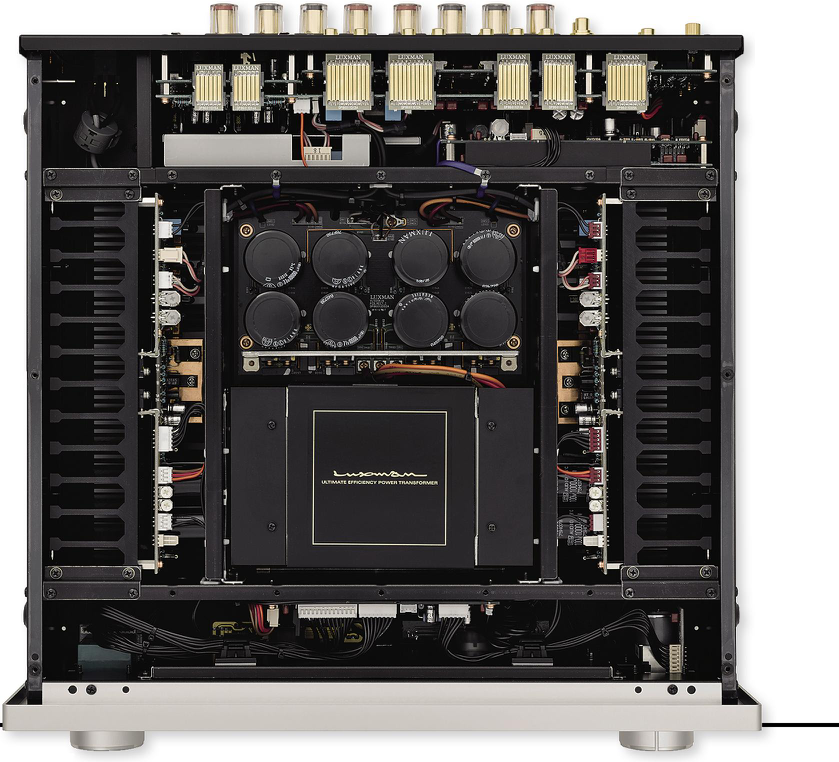
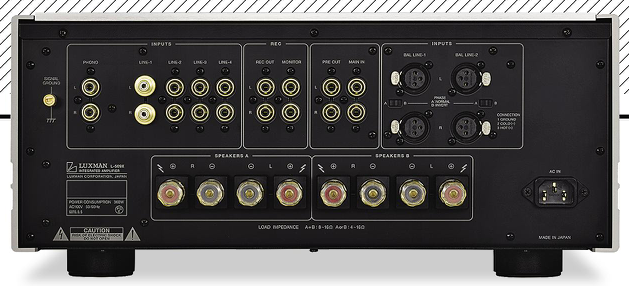
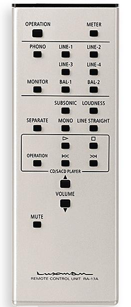 The L-509X rewards both ‘lean back’ and ‘lean forward’ listening, not least because it always seems entirely in control of the speakers, with no sense of speed-impeding smear or overhang. Notes start sharply and decay realistically, giving a sound that’s both immediate and delivered with real presence. It’s a sound that even the wilful mayhem of the latest Sparks set, Hippopotamus [BMG 538279612], can’t catch out. Yes, the sound the Mael brothers deliver is an exercise in studied chaos, but even those falsetto’ish vocals are clearly audible in a track like ‘So Tell Me Mrs Lincoln Aside From That How Was The Play?’, which is every bit as bonkers as the title suggests. It may not be quite what the Luxman engineers had in mind when they designed the L-509X but the fact it works so well shows that their amplifier has wide-ranging capabilities beyond the breathy jazz of so many hi-fi demonstrations.
The L-509X rewards both ‘lean back’ and ‘lean forward’ listening, not least because it always seems entirely in control of the speakers, with no sense of speed-impeding smear or overhang. Notes start sharply and decay realistically, giving a sound that’s both immediate and delivered with real presence. It’s a sound that even the wilful mayhem of the latest Sparks set, Hippopotamus [BMG 538279612], can’t catch out. Yes, the sound the Mael brothers deliver is an exercise in studied chaos, but even those falsetto’ish vocals are clearly audible in a track like ‘So Tell Me Mrs Lincoln Aside From That How Was The Play?’, which is every bit as bonkers as the title suggests. It may not be quite what the Luxman engineers had in mind when they designed the L-509X but the fact it works so well shows that their amplifier has wide-ranging capabilities beyond the breathy jazz of so many hi-fi demonstrations.